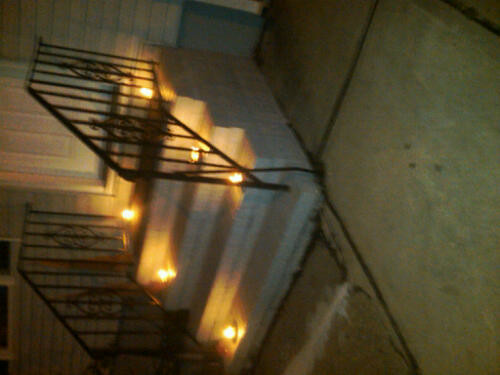When I was five, my mom enrolled me into Mrs. Morton’s kindergarten class at St. Mary’s Elementary School in Manhasset. There was a parish closer to our house in Floral Park, but my mom and dad worked full time and St. Mary’s was the only school with an afterschool program that lasted until 6 pm. Plus, my mom wanted to do everything she could to keep me out of the New York City public schools. She didn’t want me to be exposed to violence and racism at five years old and she wanted me to have the simple, sheltered childhood that Catholic school would provide. For high school, I chose to continue my Catholic education at Archbishop Molloy, where once again I was extremely sheltered. So, because of my shielded childhood and adolescence, the New York Cities depicted in “Do The Right Thing,” and “Mad Hot Ballroom” are both unfamiliar to me personally. I have only really seen them in movies or on TV.
In “Do The Right Thing,” there are four communities clearly represented the black community, the white/Italian community, Korean community and the Hispanic community. Spike Lee’s “Do The Right Thing” completely plays into racial stereotypes. The Korean grocery owners, pizza dough slinging Italians, rap-blasting blacks, and Hispanic baby-mama all fit common racial stereotypes to a T. The stereotypes, sad to say have not changed at all. My only exposure to them has been from television. The media influences racial animosity and stereotypes more than anything else. Take the Jersey Shore for example: the Jersey Shore reinforces the stereotypes shown in “Do The Right Thing.” The dumbass, hothead Guido image had been passed down for generations.
Side Note: The problem with stereotypes is that majority of them are somewhat based in truth and that is why people get so defensive. For example, my family fulfills the majority of Italian stereotypes. My aunts all know how to make pizza, my dad has a terrible temper, and my family is extremely close and fiercely defensive. While we may not go as far as sending people cryptic messages with dead fish or leaving threats in the form of horse heads in some ones bed while they are sleeping, my family would do anything for me and I would do the same for them. Plus, a few of my cousins with super frizzy hair have a tendency to go through a couple bottles of hair gel in less than a week and my a few of my uncles in Sicily own barber shops. No one would buy into stereotypes if they weren’t partially true.
In “Mad Hot Ballroom,” there are many different communities represented, except unlike “Do The Right Thing,” the community groupings are based more on socio-economics than on race. The film, which features 11 year olds from well-funded public schools and from poorly funded public schools, shows the vast difference in quality of education for kids living in underprivileged neighborhoods. With fewer supplies and resources, the kids coming from the poorer school districts are exposed to much more than those in wealthier school districts an are given fewer programs with which to express themselves.
Side Note: I think that the dance program showcased by this documentary was a great idea and wish that I had had something like that in my school. Unlike the characters in “Do The Right Thing,” the kids in “Mad Hot Ballroom” were able to overcome their societal boundaries and all compete together harmoniously. Despite their differences in racial backgrounds, the kids in “Mad Hot Ballroom” all get along just fine. The New York depicted in “Mad Hot Ballroom” is closer to my version of New York because it was filmed more recently. The 2005 documentary, with Blacks, Asians, Whites, and Hispanics all working together, juxtaposed along side Spike Lee’s 1980’s film shows just how far society has come.
























